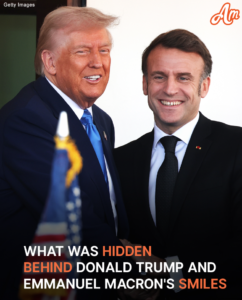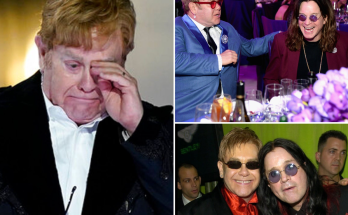When world leaders meet, their body language often reveals more than their words. One of the most analyzed interactions in recent political history is the series of handshakes exchanged between former U.S. President Donald Trump and French President Emmanuel Macron. These handshakes, often described as intense, have been scrutinized by body language experts for their deeper significance.
One of the most memorable handshakes between Trump and Macron took place during a NATO summit. As cameras flashed, Trump extended his hand, gripping Macron’s tightly. The handshake lasted several seconds, with both leaders maintaining firm eye contact. Macron, instead of yielding, reciprocated the grip with equal force, their knuckles whitening from the pressure.
According to body language expert Dr. Lillian Glass, this handshake was a power play. “Trump is known for his dominant handshakes, where he pulls people in and asserts control,” she explains. “Macron, however, was prepared. His firm grip and prolonged eye contact sent a clear message: he would not be dominated.”
Dr. Glass points out that in many of their interactions, Macron used a tactic known as the counter-grip. “Rather than passively accepting Trump’s handshake, Macron actively resisted, showing that he was just as strong a leader.” This move was symbolic of Macron’s intention to stand his ground diplomatically, rather than simply aligning with Trump’s influence.
Another key moment came during Trump’s visit to France for Bastille Day. As the two leaders shook hands, Macron placed his other hand on Trump’s forearm, a gesture that body language expert Joe Navarro interprets as an attempt to create connection while also subtly asserting dominance. “By using both hands, Macron not only ensured control but also projected warmth, making the interaction seem less confrontational,” Navarro explains.
The handshake dynamics between the two leaders reflect their broader political relationship. Trump, known for his aggressive negotiation tactics, often used physical gestures to establish superiority. Macron, in contrast, employed a mix of resistance and engagement, signaling that he was both willing to cooperate and stand firm when necessary.
Beyond handshakes, their body language in other meetings also provided insight. During press conferences, Trump often patted Macron on the back—another sign of dominance. Macron, meanwhile, occasionally touched Trump’s arm while speaking, signaling camaraderie but also counteracting Trump’s attempts at control.
These interactions reveal the strategic nonverbal communication that occurs at the highest levels of diplomacy. “Every handshake, every touch, every glance is carefully calculated,” says Navarro. “Leaders like Trump and Macron understand the power of body language, and they use it to send messages not only to each other but to the world.”
Ultimately, the intense handshakes between Trump and Macron were more than just greetings—they were silent negotiations, subtle battles for influence played out in the most public of settings. As history has shown, in the world of politics, even the simplest gesture can speak volumes.

